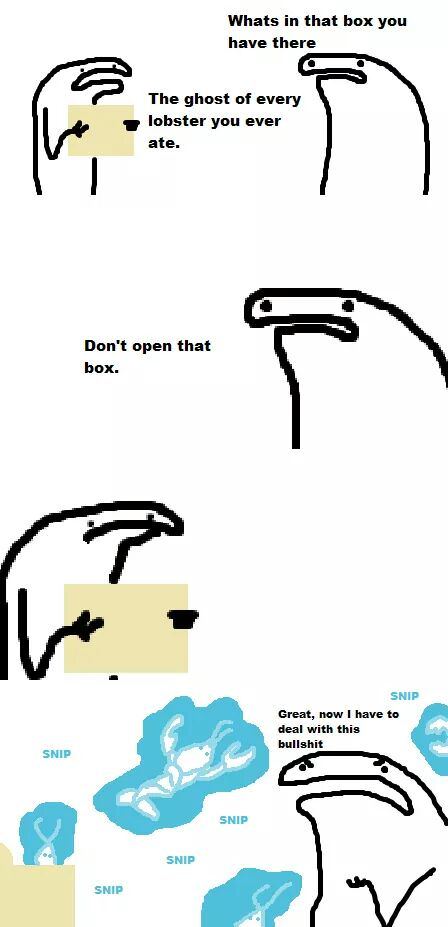#O.C. and Stiggs
Explore tagged Tumblr posts
Text
O.C. and Stiggs
pranking randall schwab jr.



a drama in three acts
5 notes
·
View notes
Text
Projector Room Podcast 143 "Quicksand Hijack" 26/07/2023
This week! Cary Grant, Hijack, Quicksand and Dead to Me! Avicide for Bird Box Barcelona, O.C. and Stiggs bully the Schwabs, there's some dubious retro French filth, sorry, arthouse, as we admire a polished Willie Wonka!
Ted Salmon, Gareth Myles, Allan Gildea are back for another roundup of all things film, cinema and TV. Cary Grant gets scrutiny in Themed Treats, we focus in on the currently-running Hijack, lose our way in some Quicksand and end up Dead to Me! Avicide for Bird Box Barcelona, O.C. and Stiggs bully the Schwabs, there’s some dubious retro French filth, sorry, arthouse, as we admire a polished…
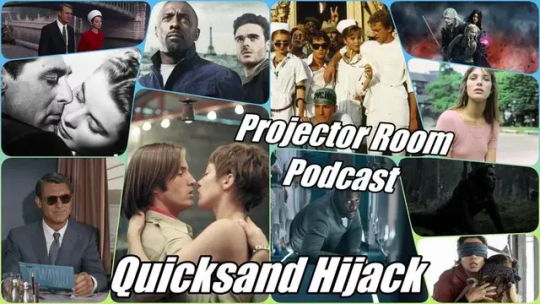
View On WordPress
#Bastille Day#Bird Box Barcelona#Cary Grant#Dead to Me#Hijack#Holdovers#Nandor Fodor#O.C. and Stiggs#Quicksand#Ted Raimi#Willie Wonka
0 notes
Text
'Penkele' live performance by King Sunny Ade & His African Beats from Robert Altman's film O.C. & STIGGS, 1983

with Tina Louise, Daniel H. Jenkins, Tiffany Helm, King Sunny Ade, Martin Mull, Nina Van Pallandt, Cynthia Nixon, Donald May, Laura Urstein, Dan Ziskie, Greg Wrangler, Paul Dooley, Jane Curtin, Neill Barry, Louis Nye, Jon Cryer, Carla Borelli, Victor Ho, James Gilsenan, Stephanie Elfrink, Amanda Hull, Dana Andersen, Jeanine Cole, Caroline Aaron, Margery Bond and the African Beats



0 notes
Text
The first film that I got around to watching and wanted to write about for my self titled “Chalupa Movie Dump” is Robert Altman’s O.C. and Stiggs (1985) which I had not known about at all, or expected much of it when sitting down to watch it the other day. The film is about two teenagers, O.C. and Stiggs as they cause chaos all throughout their summer vacation and specifically targeting the upper middle class family in their town, the Schwabs, who the father of owns an insurance company and also commits O.C.’s grandfather into a group home.
Right away though I was drawn in by the use of pastel color, and the almost cartoonish production design in some areas. The humor of the film too was surprise for me, as my only exposure to teen comedies from the 80s had been fairly innocent, while O.C. and Stiggs delivers a nasty and immature side to teenage humor that shocked me as much as it made me laugh. The humor isn’t just teen immaturity, it also satirizes wealthy and more specifically conservative middle class households with the pure stupidity of the Schwab family. I really wish I could list out every single joke that got me so hard during my first watch of this, but I think it’s best if anyone going to watch it does so without everything laid out already.
I’ll need to rewatch this film later down the line since I couldn’t keep up with everything at first watch, but it really did make me wonder how this wasn’t a film more look back on. I suppose part of it could be that the executives weren’t too fond of Altman’s humor, or maybe the fact that it so blatantly is making fun of rich conservatives that it didn’t rise in popularity right away. Either way I really enjoyed watching this work by Altman, and I hope as I (hopefully) journal film reviews out, that I can also get better at articulating and forming out these opinions.
ALSO: I need to shout out bobygamesdotcom for streaming this. I wouldn’t of had found this film if it weren’t for him.

4 notes
·
View notes
Photo
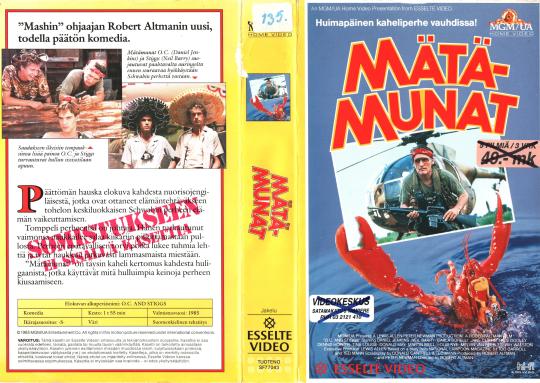
Mätämunat / O.C. and Stiggs (1985) Esselte Video / MGM/UA Home Video https://www.videospace.fi/release/matamunat_vhs_esselte_video_mgmua_home_video_finland
#Videospace#VHS#Mätämunat#O.C. and Stiggs#Robert Altman#Daniel Jenkins#Neill Barry#Jane Curtin#VHS tapes#VHS art#VHS cover
0 notes
Text
‘O.C. and Stiggs’ And The Utterly Unreleasable, Mind-Roasting Summer Of Robert Altman by Keith Phipps
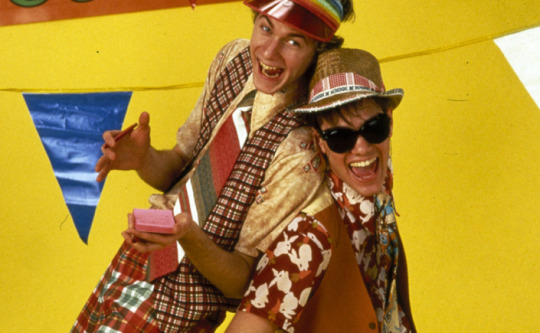
[This month, Musings pays homage to Produced and Abandoned: The Best Films You’ve Never Seen, a review anthology from the National Society of Film Critics that championed studio orphans from the ‘70s and ‘80s. In the days before the Internet, young cinephiles like myself relied on reference books and anthologies to lead us to film we might not have discovered otherwise. Released in 1990, Produced and Abandoned was a foundational piece of work, introducing me to such wonders as Cutter’s Way, Lost in America, High Tide, Choose Me, Housekeeping, and Fat City. (You can find the full list of entries here.) Over the next four weeks, Musings will offer its own selection of tarnished gems, in the hope they’ll get a second look. Or, more likely, a first. —Scott Tobias, editor.]
Robert Altman was happiest working in the shadows. That’s true of his relationship with Hollywood—where he never fit in, except as the town’s designated maverick—but also true of his relationship with other movies. Altman always had a lot to say about his craft, even if he tended to treat interviews as opportunities to reiterate points he made many times. One talking point he returned to, including when I spoke to him in 2000, is the notion that influence could work backwards. “The directors who’ve probably had the most influence on me,” he said, “were probably names I don’t even know, because I looked at a film that was really bad and I would say, ‘Hmm, I’m never going to do that.’ That’s probably the most direct positive influence on the work I do. I don’t even know who those directors are.”
When talking about Altman, it’s always worth talking about what he was trying not to do as much as what he hoped to accomplish. M*A*S*H can be seen as a war film determined to show viewers what other films would not, from the bloody mess left after battles end to the long stretches of wartime boredom to the sometimes ugly sides of the lifesaving heroes. McCabe and Mrs. Miller is a Western without heroes. The Long Goodbye lets a noir play out in the sunny, counterculture-filled ‘70s Los Angeles.
All of which sort of explains how Altman came to direct the teen comedy O.C. and Stiggs—but only sort of. Shot in 1983—while films like Screwballs, Private School, and Losin’ It rolled out in multiplexes across America—it should have been released to catch the wave of raunchy teen comedies stirred by National Lampoon’s Animal House in 1978 and made into a tsunami by Bob Clark’s Porky’s three years later. But Altman was far from on board with the T&A-filled spirit of the times. When approached by producer Peter Newman, he recalled thinking, in an interview conducted for the film’s DVD release, “This isn’t my kind of film. I don’t know how to do these kinds of films.’ But that was a time when these teenage films were kind of in…mode. And I hated them. I just hated them. And I thought, here’s a chance to do a satire on something that I feel strongly about.” “I went after it,” he added, in a telling choice of phrase, “in that matter.”
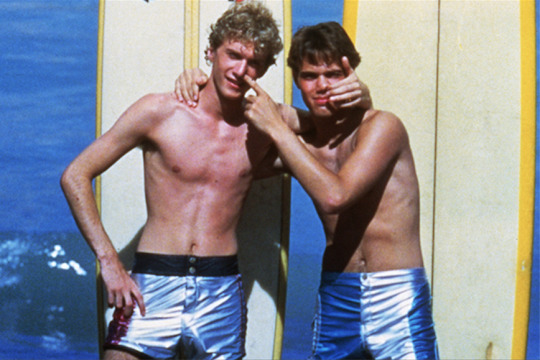
He at least had slightly more prestigious source material from which to draw, if only slightly. Though the film doesn’t bear the National Lampoon name, its title characters, a pair of prank-happy Arizona teens, come from the magazine’s pages. Created by Lampoon writers Ted Mann and Tod Carroll, Oliver “Out Of Control” Ogilvie and Mark Stiggs became favorite recurring characters in the Lampoon’s last gasp of relevance in the early ’80s. Their stories also embodied the changes to the magazine’s spirit in the Reagan era, when the always freewheeling publication started punching down far more often than it punched up. Two children of privilege, the O.C. and Stiggs of its pages enjoy an adolescence filled with excess, abuse, and casual racism and misogyny. Their adventures climaxed with the novella-length “The Utterly Monstrous, Mind-Roasting Summer of O.C. and Stiggs,” which took up the entirety of the Lampoon’s 1982 issue.
It also provided the backbone to Altman’s film, courtesy of a screenplay credited to Mann and Donald Cantrell. In Hunter Stephenson’s extensive history/appreciation of the film, Mann notes that Carroll worked on the script but took his name off the movie. Altman then reworked the script and allowed it to drift further from the original vision thanks to a typically improvisation-friendly set. Really, he had no choice. Altman was never known for being overly respectful of screenplays, but O.C. and Stiggs plays as if he’s compelled to actively work against the source material while still following the outline of the plot. There’s a brutal wit to Mann and Carroll’s stories*, but the teenage nihilism at their core is hard to square with Altman’s sensibility, which could be unsparing of human behavior while still maintaining an underlying respect for human decency.
As such, Wino Bob, the boys’ “Negro derelict” friend, is given all the dignity a character named Wino Bob can hope to have, thanks to a heartfelt performance from Melvin Van Peebles. The heroes’ attempt to shame a pair of teachers in a gay relationship becomes the occasion for one of the teachers to say he doesn’t care. And the film’s central conflict between O.C. and Stiggs’ and the Schwab family, a grotesque suburban clan that’s grown rich from insurance sales, becomes a battle between haves and have-nots, with O.C. now motivated to exact revenge on the Schwabs thanks to the cancellation of his grandfather’s (Ray Walston) health insurance, a development that will send O.C. off to live with relatives in Arkansas at the end of the summer unless something can be done. What emerged looks more like an Altman movie than, say, Fraternity Vacation, but it’s a strange beast nonetheless, a Brundlefly-like hybrid that’s not really equipped to live in any known movie habitat. There’s too much overlapping dialogue and restless camerawork, to say nothing of the virtual absence of nudity, for Porky’s fans, too many outrageous pranks for the arthouse.
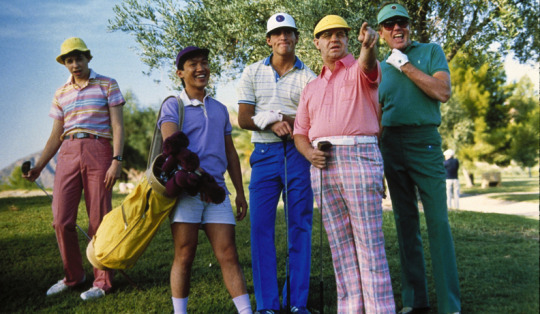
That might explain why MGM didn’t know what to do with the movie, shelving it after disastrous screenings in 1984, which came and went without a release. So did 1985. And 1986. And though the film apparently played some theaters in 1987, it didn’t reach New York until 1988, when it appeared at Film Forum as part of a Dennis Hopper retrospective. Most viewers who encountered it did so on VHS in the late ‘80s, when it already looked like a lost film from a bygone time, the T&A comedies of the early ‘80s having given way to the more sympathetic efforts of another Lampoon alum, John Hughes. (If nothing else, Jon Cryer, who plays the much-tormented Randall Schwab, already looked noticeably younger in his feature debut by the time saw the light of day.)
Yet while O.C. and Stiggs will deservedly never be mentioned near the top of any Altman ranking of the director’s film (or, if we’re being honest, too close to the middle), there’s nothing else quite like it. Both Daniel H. Jenkins and Neil Barry (O.C. and Stiggs, respectively) make for appealing leads, embodying their characters’ screw-it-all, question everything, respect nothing teenage attitude without making them seem heartless. (That spirit in two lines: “I want you to call me Stiggs. It sounds more ridiculous.”) And for every obvious flaw, there’s some compensating element. A big wedding set piece doesn’t really go anywhere, but it does feature a charming dance sequence between Jenkins and Cynthia Nixon (both of whom would stay in Altman’s orbit for a while). The comedy falls flat in the action finale, but it does feature a bizarre, self-parodying performance from Dennis Hopper as a Vietnam vet for whom the war never ended. Some sections drag, but Altman throws in a winning concert scene from King Sunny Ade. Also featured: Jane Curtin as an inventive alcoholic mom for whom every object can double as a place to hide booze, a supremely chill Martin Mull, Bob Uecker, and a cameo from Hal Phillip Walker (Thomas Hal Phillips), the third-party candidate whose cryptic proclamations filled the background of Nashville.
It’s a film that time has only made more intriguing, thanks to its unmistakable Altman-ness, its undeniable eighties-ness, and the uneasy alliance the film forces between the two. Altman “went after” the ‘80s teen movie, and though the genre barely noticed his attack, the resulting film remains a disjointed but spirited critique of Reagan-era values and a salute to the teen spirit of subversion, even if that subversion took the form of driving around in a suped-up car with monster truck tires on it just to annoy the squares.
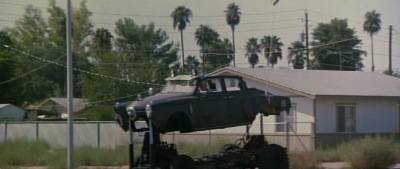
The film first came to my attention, years after its release, via my friend Todd Hanson, a gifted writer for The Onion whose pop culture enthusiasms had a way of getting passed from co-worker to co-worker. When I got the chance to speak to Altman, I knew I had to devote at least a few of my previous 20-minute slot to what had by then become an office-wide obsession. “I was attacking the teen mentality of the audience,” he said, “and I just was a little too… Nobody got it.”
Looking back, it might be that not enough tried. At that low ebb of Altman’s commercial fortunes—post-Popeye, pre-Player—he’d become too easy to take for granted and an odd, flawed, but undeniably one-of-a-kind film could be dismissed as just another ‘80s misstep. Maybe it seemed like we’d have Altman movies forever, and the era in which studios might somehow find themselves funding impossible-to-define oddities that doubled as single-finger salutes to the bad taste of their intended audience would never end.
* In an odd case of two geniuses drawing inspiration from an unlikely source, Mann and Carroll’s stories also inspired D.R. and Quinch, an early writing effort from comics great Alan Moore.
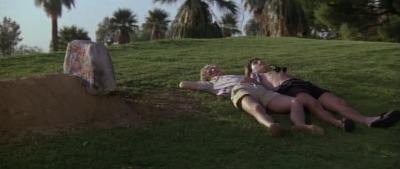
#robert altman#o.c. and stiggs#popeye#the player#the onion#national lampoon's animal house#screwballs#private school#losin' it#fraternity vacation#porky's#musings#oscilloscope laboratories
16 notes
·
View notes
Photo
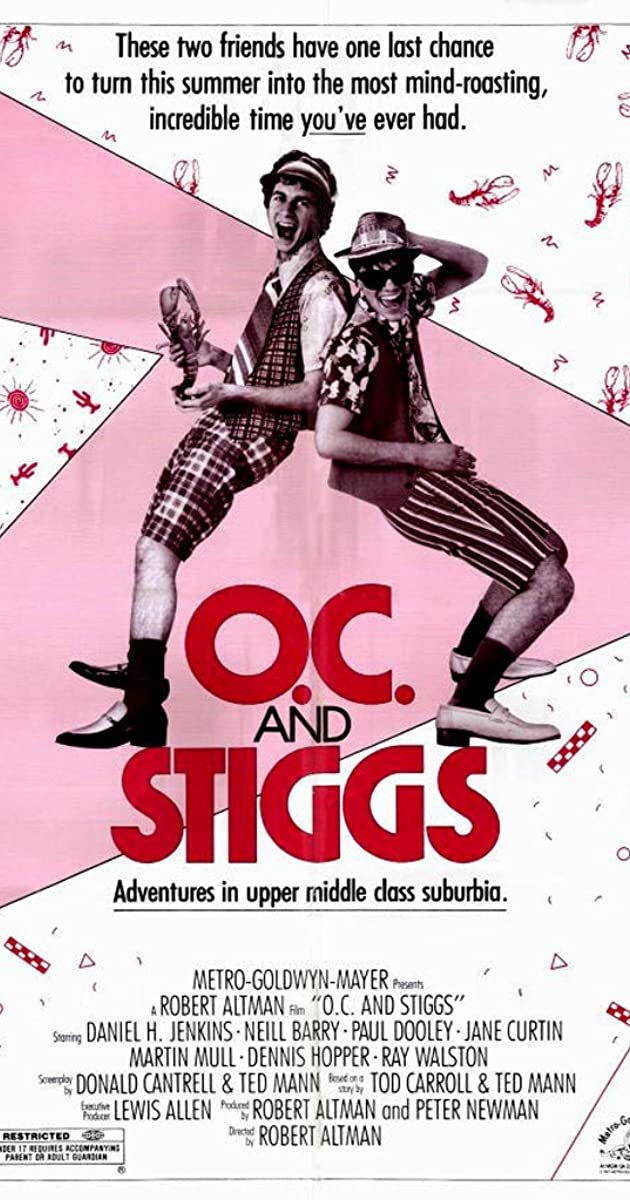
SEE YOU NEXT WEDNESDAY!
O.C. AND STIGGS (1987, Robert Altman)
2 notes
·
View notes
Photo

Danish baroness, folk singer and actress Nina van Pallandt is best remembered for her appearances in four Robert Altman films – The Long Goodbye (1973), A Wedding (1978), Quintet (1979) and O.C. & Stiggs (1985) – as well as small roles in American Gigolo (1980, Paul Schrader) and Cutter’s Way (1981, Ivan Passer). Here photographed by Terry O’Neill in 1970.
26 notes
·
View notes
Text
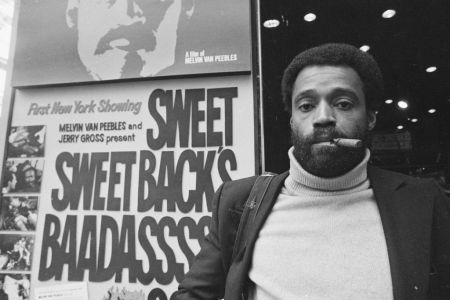
Filmmaker, author, and actor Melvin Van Peebles was born on August 21, 1932, in Chicago, Illinois. Growing up during World War II, he spent his adolescence with his father, a tailor. Van Peebles graduated from Township High School in Phoenix, Illinois, in 1949 and spent a year at West Virginia State College before transferring to Ohio Wesleyan University where he earned his B.A. degree in English literature in 1953.
During the late 1950s, Van Peebles served three and a half years as a flight navigator in the United States Air Force. After the military, he lived briefly in Mexico and San Francisco where he wrote his first book, The Big Heart, which was about the life of San Francisco’s cable cars and their drivers. Moving to the Netherlands, he studied at the Dutch National Theatre before moving to France in the early 1960s. During this time, Van Peebles wrote several published novels in French, including La Permission in 1967. He filmed this story under the title, The Story of the Three-Day Pass, and it was selected as the French entry in the 1968 San Francisco Film Festival. It earned critical acclaim, which helped him obtain a studio contract with Columbia Pictures. In 1969, Van Peebles returned to the U.S. to direct and score his first Hollywood film Watermelon Man. The film was released in 1970, followed by his independent feature Sweet Sweetback’s Baadasssss Song, probably his best known work. Some of his other films include Don’t Play Us Cheap in 1973, Identity Crisis in 1989, Gang in Blue in 1996 and Le Conte du ventre plein in 2000.
As a playwright and composer, Van Peebles wrote two Broadway hit plays: Ain’t Supposed to Die a Natural Death in 1971 and Don’t Play Us Cheap in 1972, for which he earned a Tony Award nomination. As an actor, Van Peebles has appeared in several films including Robert Altman’s O.C. and Stiggs in 1987 and Mario Van Peebles’ Panther in 1995, which he also wrote and co-produced. In 2005, Van Peebles was the subject of a documentary entitled How to Eat Your Watermelon in White Company (and Enjoy It). He has been honored with numerous awards, including a Grammy and a Drama Desk Award. He received the Children’s Live-Action Humanitas Prize for The Day They Came to Arrest the Book in 1987, and in 1999, he was awarded the Chicago Underground Film Festival’s Lifetime Achievement Award.
0 notes
Photo






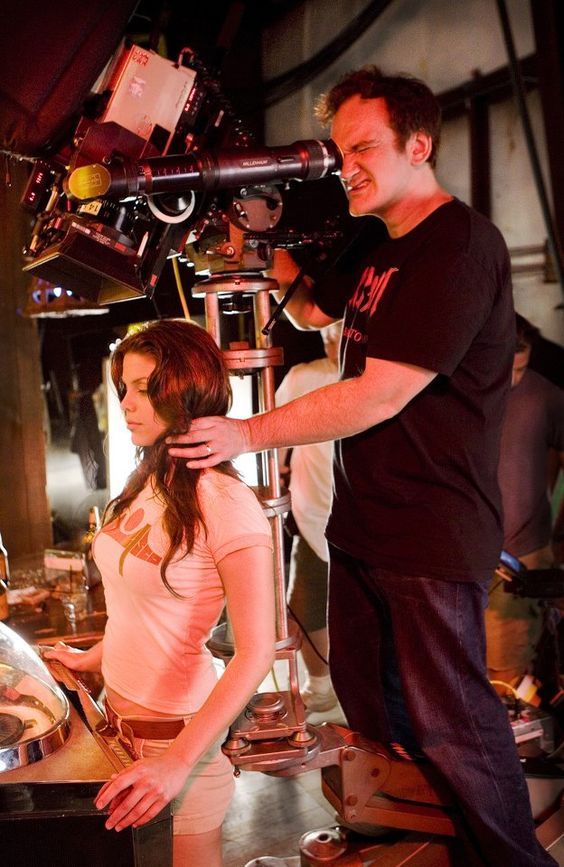



Behind the Scenes During Production of -
8½ (1963) Barbara Steele with Claudia Cardinale ; BLACK SABBATH (I TRE VOLTI DELLA PAURA) (1963) Boris Karloff ; MANIAC (2009) director Franck Khalfoun with Elijah Wood ; PLANET OF THE APES (1968) ; DONNIE DARKO (2001) Jena Malone with Jake Gyllenhaal and James Duval ; CARNAL KNOWLEDGE (1971) Jack Nicholson with Ann-Margret and Art Garfunkel ; DEATH PROOF (GRINDHOUSE) (2007) Vanessa Ferlito with Quentin Tarantino ; O.C. AND STIGGS (1983) Neill Barry with James Gilsenan, Daniel H. Jenkins and others plus Victor Ho with director Robert Altman and finally Jean-Luc Godard filming WEEKEND (1968) on location
5 notes
·
View notes
Quote
She's real frail and introverted, she likes to danthe to ballet and play her harp. We thought she'd be happier with a... machine gun.
Daffy (about Granny)
0 notes
Text
Arty Farty Questions
Courtesy of Half-Rutter:
1) Have you ever been moved to tears by a painting / sculpture / work of visual art? What was it?
I’m not an emotional person at all so this is a rare occurrence for me! The ending of Umberto D absolutely crushes me though. And I’m always reminded of it when I see those photos of old people reunited with their pets after natural disasters.
2) When was the last time you were so engrossed in a book you disregarded something IRL, such as missing a stop on your train? (Bonus, do you remember what was the scene in the book?)
When Anne Leckie’s Ancillary Justice came out I was engrossed in it and had to be gently reminded by a bus driver that I needed to get off before he could let the other punters on.
3) What film would you most love to live inside? (This refers to costumes, set, locations, time period, characters - but you do not have to be constrained by the film’s exact plot.)
I was going to say some John Hughes fluff, but on second thoughts Altman’s O.C. and Stiggs would be more fun - antagonising the Schwabs and seeing King Sunny Ade would be infinitely better than agonising over prom.
4) Architecture - you are allowed to live for one year in any building designed by any architect (it will be made habitable for you, and bills and furnishings will be taken care of.) What building (existing or existed) and/or what architect to design a ~dream building~?
One of Peter Womersley’s houses.
5) What’s your favourite museum in the world?
Depending on the exhibitions, the Whitney, Guggenheim, Hirshhorn, Tate, MoMa, SoHo Contemporary?
6) An eccentric billionaire has made a bequest: upon your death, a small plaque and a moderate grant will be given to the individual museum, gallery, library or performing arts venue that has made the most positive impact on your creative life. Where will your plaque go?
Rather than a single institution I’d like it to go to works of public art in general because I wasn’t taken to museums etc. as a kid and my first experience of visual art was, you know, seeing walls with William Mitchell sculptures or whatever on them, and being fascinated.
7) Were you taught to play any instruments while you were growing up? (It doesn’t matter if you can play them now.) If you could go back and arrange lessons for your child self, what instrument would you have played?
No I was actively discouraged! The neighbours would have banged on the wall. Neither of my parents were remotely musical. All I can remember being on offer at school was the recorder or flute. I used to quite like singing until my voice broke and went from a soprano to a bass baritone, so maybe that?
8) Do you do any crafts? Knitting, sewing, whittling, metalwork, beading, photography, printmaking, anything you can make yourself?
I can paint and do incredibly uncool things like diorama making. My first paid job was painting lead miniatures at the design studio of that games shop that your dad probably spent too much time in when he was really into Slayer.
9) Dance lessons (ballet, tap, contemporary, salsa, it’s all good!) Yes / No / Was Forced But Hated It / Always Wanted To But Wasn’t Allowed?
Scottish country dancing: pretty inescapable if you grew up there. Did it at school and was expected to be able to join in family weddings etc. Pretty early on I decided it was Organised Fun and therefore not for me.
10) Do you know any poetry by heart? And if someone really wanted to impress you, what poet or poem would they recite to you?
Just a few Burns poems. If someone recited The Waste Land, that would be something.
Tag yourself if you feel like doing these....
15 notes
·
View notes
Photo

. Alamo Drafthouse Yonkers . Film Club #65 . Robert Altman Double Feature . O.C. And Stiggs . California $plit . #robertaltman #ocandstiggs #calaforinasplit #alamodrafthouse #alamodrafthouseyonkers #alamodrafthousegreaterny #alamodrafthouseyonkersmulligan #alamoyonkers #alamoyonkersfilmclub @alamoyonkers (at Alamo Drafthouse Yonkers)
#65#robertaltman#ocandstiggs#calaforinasplit#alamodrafthouse#alamodrafthouseyonkers#alamodrafthousegreaterny#alamodrafthouseyonkersmulligan#alamoyonkers#alamoyonkersfilmclub
0 notes
Text
Jon Cryer Net Worth
Jon Cryer’s Biography
Jon Cryer, born as Jonathon Niven Cryer, is an America based actor, screenwriter, television director, and producer. The actor is famous for playing the role of “Duckie” Dale in Howard Deutch’s film Pretty in Pink. Besides, the actor has appeared in other films like Superman IV: The Quest for Peace (1987), Hiding Out (1987), Hot Shots (1991), Tortured (2008), Shorts (2009), Hit by Lightning (2014), and so on.
Jon Cryer was born on 16th April, 1965 in New York City, New York to Gretchen Cryer, a playwright, songwriter, actress, and singer, and Donald David Cryer, an actor, and singer. The actor also has two sisters, Robin and Shelly. During his teenage, Jon attended Stagedoor Manor Performing Arts. Later he enrolled at Bronx High School of Science and graduated in 1983. Cryer had also skipped and attended summer short course in Shakespeare at Royal Academy of Dramatic London, UK.
Career Debut
Jon made his acting and movie debut as Charles Cummings in film No Small Affair in year 1984. The following year, he appeared in a small role of Teenage Herbert in film Noon Wine, and portrayed Randall Schwab Jr. in film O.C. and Stiggs. Later in year 1986, Jon Cryer played the role of Phil “Duckie” Dale in film Pretty in Pink.
In the year 1987, Jon Cryer appeared as Morgan Stewart in film Morgan Stewart’s Coming Home. Besides, he played the role of Lenny Luthor and Grant in films Superman IV: The Quest for Peace and Dudes respectively. Further, he portrayed Andrew Morenski / Max Hauser in film Hiding Out in the same year. He earned good sum of money through these films which helped him to raise his net worth.
Subsequently, Cryer had a minor role of Frat Boy in film Penn & Teller Get Killed in 1989. Besides, the actor played the role of Teddy Zakalokis in CBS’s television sitcom The Famous Teddy Z. Later in 1991, the actor portrayed Jim “Wash Out” Pfaffenbach in film Hot Shots!. In year 1993, he appeared as Tommy Kazdan and Guy Franklin in films The Waiter and Heads.
Works from 1995 to Present
From 1995 to 1996, Jon Cryer played the role of Bob in Fox’s television sitcom Partners. In the year 1996, Jon portrayed Mark and himself in films The Pompatus of Love and Cannes Man. Subsequently, Cryer appeared as Daniel in film Went to Coney Island on a Mission from God… Be Back by Five. Besides, he played Barry in film Holy Man. Further, he had small roles in television series like Getting Personal, Mr. Show with Bob & David, and Two Guys, a Girl and a Pizza Place in the same year. All these works too helped him to increase his net worth.
Likewise, Jon Cryer worked in films like Clayton (2001), Glam (2001), The Metro Chase (2003), Unstable Fables: 3 Pigs and a Baby (2008), and Tortured (2008). In the year 2009, Jon played the role of Charles in film Weather Girl and Dad Thompson in films Weather Girl and Shorts: The Adventures of the Wishing Rock respectively. Besides, he portrayed Javier in Stay Cool in the same year. His last role in the film was Ricky Miller in film Hit by Lightning in year 2014.
Net Worth
Jon Cryer has an estimated net worth of $68 million U.S. dollars which have been earned through the films and TV series he has played in. The actor also used to earn $650,000 per episode of Two and a Half Men. In the series, he played the role of Alan Harper for 262 episodes.
Must Know Facts about Jon Cryer
Real Name: Jonathon Niven Cryer Date of Birth: 16th April, 1965 Profession: Actor, Screenwriter, Television Director, and Producer Height: 5′ 9″ Wife: Sarah Trigger (m. 1999; div. 2004), Lisa Joyner (m. 2007) Children: 2 Facebook: 16K Fans in Facebook Twitter: 182K Followers in Twitter Net Worth: $68 Million
The post Jon Cryer Net Worth appeared first on etcNepal.com.
0 notes

